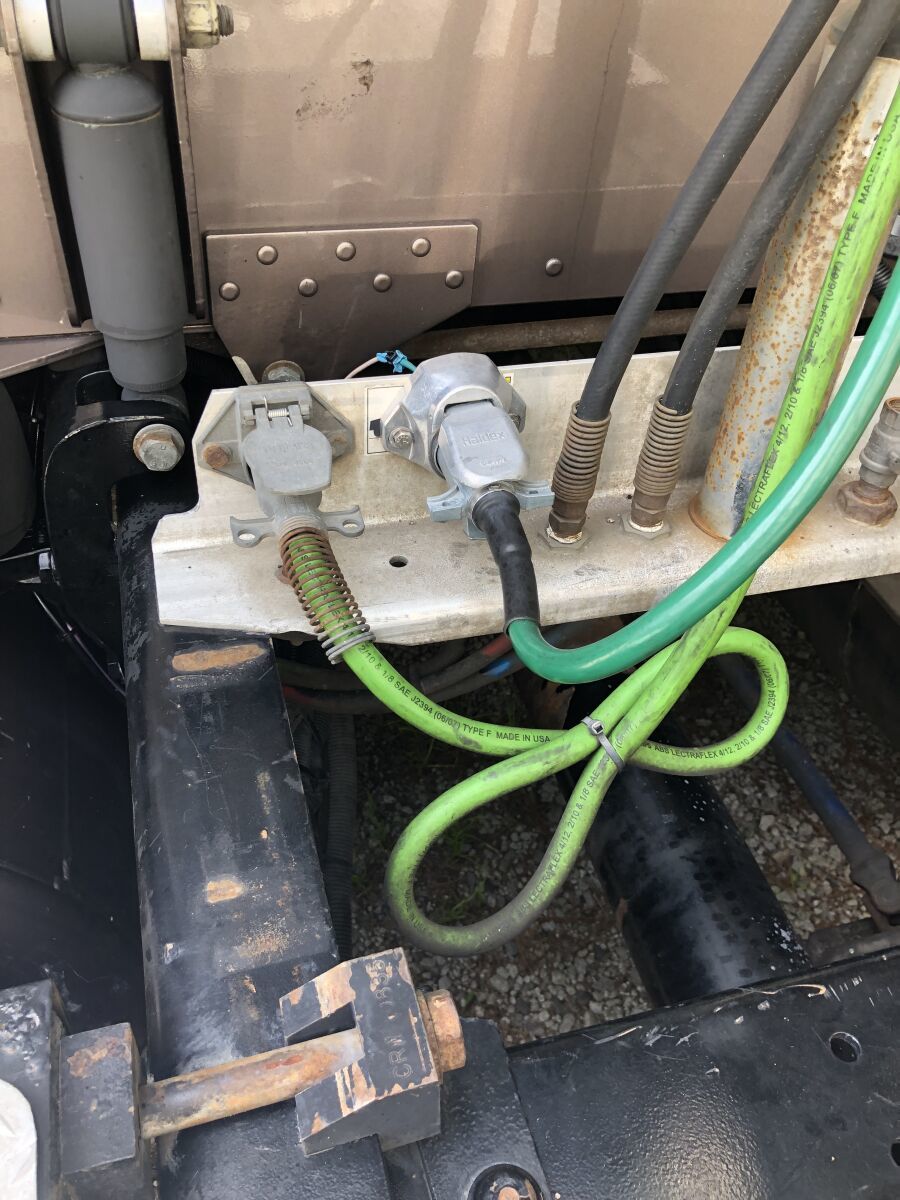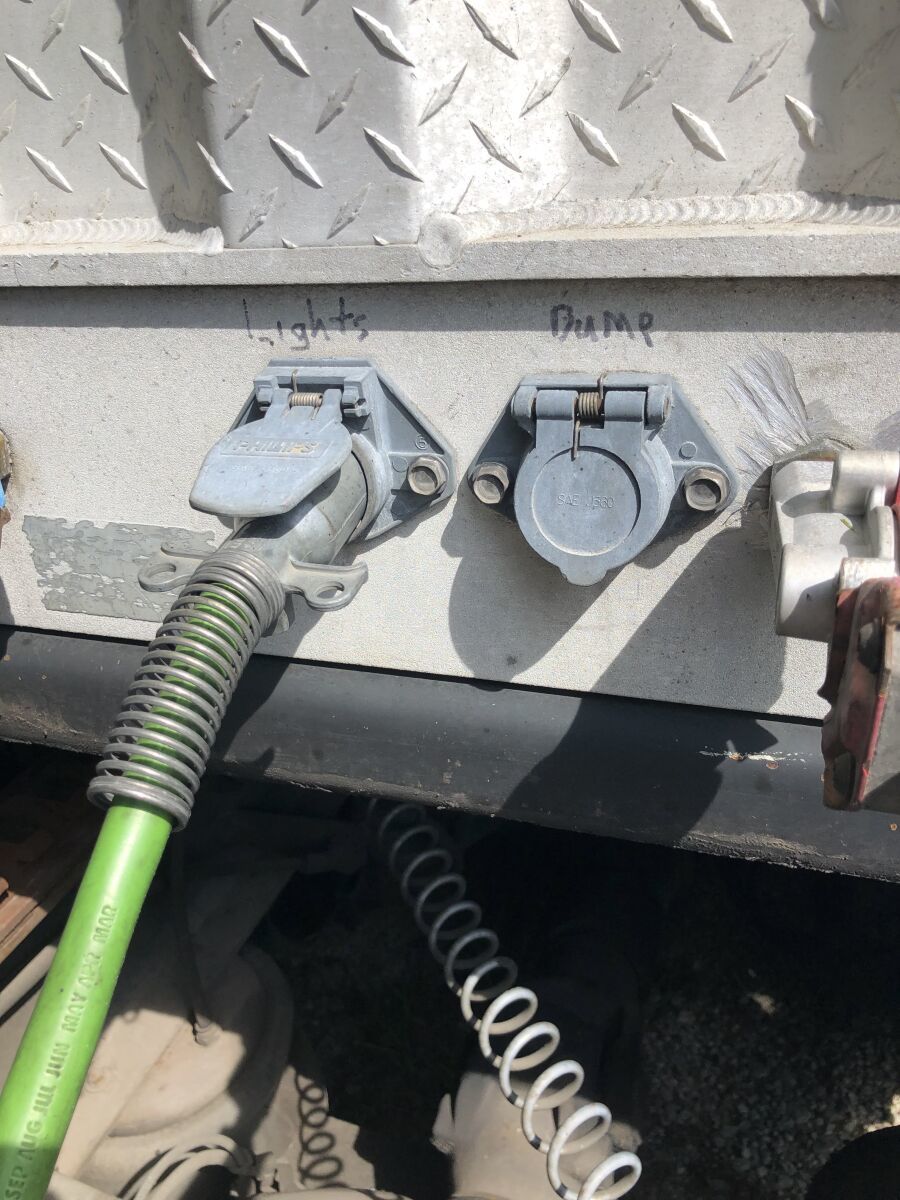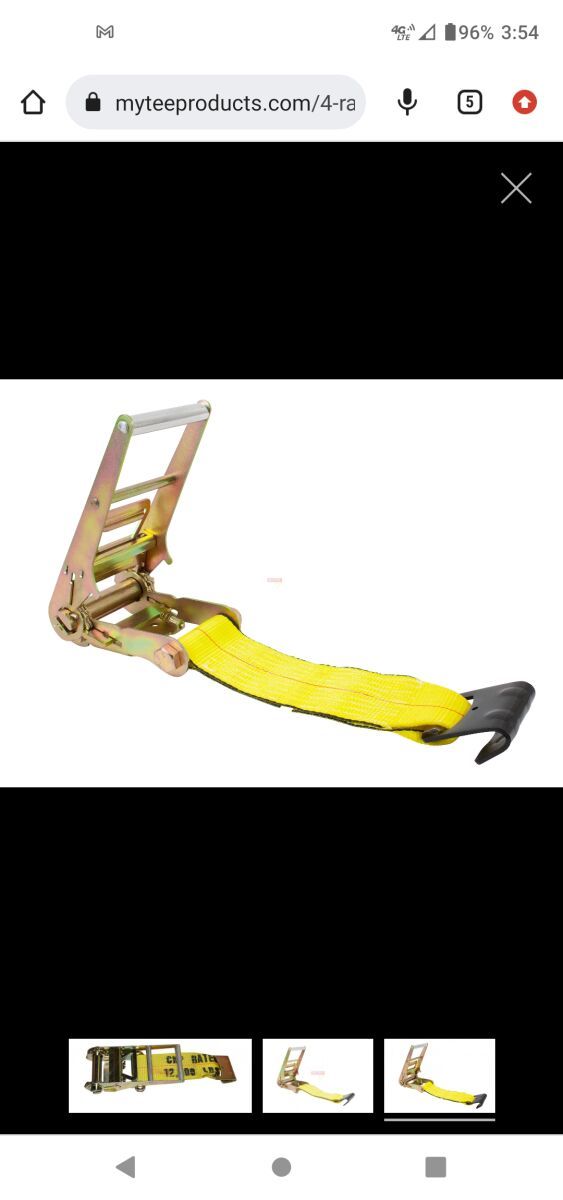Flatbed Rookie Here, Fixed Spread Q&A
Topic 32305 | Page 1
I figured being a 48' it shouldn't be an issue
You're right. You should be in compliance with the king pin laws everywhere since your trailer length is 48 feet.
You should be legal in all states. The only one I'm not clear on is Maryland. I'm going to look it up later when I have more time. I'll get back to you.
I'm sorry, I forgot your question about the dump valve. If your connections at the trailer are the standard red and blue air line and the electrical pig-tail then you don't have a dump valve. You'll have one more line to connect if you're set up with a dump valve.
My first question, or rather comment, involves do you even have the option to change the configuration. At Prime our 48 ft spread axles were fixed axles. We couldn't open or close them so for the purposes of configuration there was not a lot we could do.
That being said, at one point I actually did measure the distance between the middle of the spread axle to the Kingpin and it was less than 41 ft.
My only other tip or advice, with regards to the 48 ft fixed axle, involves where you put the weight. I would always suggest to the forklift operator that if you're going to err on weight put more weight to the back because you have a total of 40,000 lb you can put on the trailer axles whereas your limited to 34,000 on your drives. That is so long as you have at least 10 ft between the traiker axles. And if your axles are fixed like ours were at Prime, there's really nothing you can do about it if you're overweight on your drives.
This is probably not an issue for you being on a PODs dedicated account.
The other issue, is to avoid tight turns. Dragging that front axle across the ground will put enough stress on it to blow a tire or put a significant crack in the sidewall.
We didn't have any dump valves on our trailers.
I appreciate the tips fellas. Yeah, they are fixed. I got my first full load on it today and could definitely see the difference of backing/turning as opposed to empty. Dang near gotta pull it up and over and up and over. Or just nose into a spot which I'm sure I'll find myself doing when necessary. Thanks for the dump valve tip Old School. I actually did notice the the extra electrical plug on the trailer and thought that may be what it was for. But no other line, so I don't have it. Maybe have to look into that one. My very first run was from East PA over to NJ and back. Heading down to FL over the next couple of days so definitely handy having that legal information. I will be going through Maryland so I guess I'll find out one way or the other. I know these PODS don't have much weight to them so I doubt I'll even need to scale, but probably will just to err on the safe side. I'll keep adding more tips/things I run into on my journey for any people looking for future info on this subject. Thanks again.
I will be going through Maryland so I guess I'll find out one way or the other.
You have nothing to worry about in Maryland. The only thing different about Maryland is they have an "overhang" law which says your overhang (distance between rear trailer axle and rear of trailer) can't exceed 35% of the trailers wheelbase.
My first question is this trailer a flatbed or stepdeck??? They turn differently. And you load them a little different for proper axle weights.
Hauling pods you will be fine anywhere you go. I haul both with granite on them, and heading to Maryland tomorrow in fact.
I have a dump valve on my rear axle. It makes the turning easier. It pivots off the front axle. Mine is electric. I have a second pigtail and the hot wire is run to the center pin. Switch on the dash. You just have to make sure you remember to turn it off after completing the turn.

The light green cord is my lights and dark green is the dump valve.

On the trailer left connection are lights, right is dump valve.
Stepdeck:
A stepdeck , also referred to as "dropdeck", is a type of flatbed trailer that has one built in step to the deck to provide the capabilities of loading higher dimensional freight on the lower deck.
Thanks for the photos P.J. That illustrates exactly what I was speaking of.
Hey Turtle, I appreciate you jumping in here. I knew I had some recollection of Maryland concerning split axles, but since I am old and feeble I can't remember this stuff as well as I once did.
Hey Turtle, thanks for the reply and the helpful pictures bud. I have that extra outlet on the trailer but no line or setup to dump. May be something I have to look into in the future if need be but I'm making do for now. Got through Maryland with no issue as expected. I'll never have to worry about that overhang law with anything I'm currently doing anyways. To answer your earlier question, I'm just hauling flatbed, no stepdeck. It's been a really good trailer to me so far. Of course PODS don't have considerable weight that other freight has so its less of an issue.
One issue I have ran into however is a bit of a wench situation. I've noticed the very back of my load exceeds the available wench placement on my trailer. I even have empty wenches, but they can't be slid any further back due to some bolts in the railing keeping them there. I'm assuming this is to keep them from being slide in place over the rear tires as I've been told that can blow tires when the air settles or something of that nature, however I have a feeling DOT still wants the back of that load secure. I got creative (no chains or binders at my disposal when this occured.)
I grabbed 2 ratchets, ran two 2" straps through them and secured them to the rub rail and over the rear POD (7 foot POD for reference so 2 strap minimum) along with the normal 4" strap at the front of that last POD. I don't know if that's legal per DOT in place of 4" strap, but I passed a few officers and didn't get any smoke from anyone. I'd love some feedback on this issue. I feel the answer may be chains and binders which is fine, just wondering about the whole situation as a whole. Thanks again fellas.
DOT:
Department Of Transportation
A department of the federal executive branch responsible for the national highways and for railroad and airline safety. It also manages Amtrak, the national railroad system, and the Coast Guard.
State and Federal DOT Officers are responsible for commercial vehicle enforcement. "The truck police" you could call them.
Stepdeck:
A stepdeck , also referred to as "dropdeck", is a type of flatbed trailer that has one built in step to the deck to provide the capabilities of loading higher dimensional freight on the lower deck.
Buy yourself a couple of portable 4-in ratchets. They're great for those times when you need one in a particular spot, like over a tire.

HOS:
Hours Of Service
HOS refers to the logbook hours of service regulations.New Reply:
New! Check out our help videos for a better understanding of our forum features

















Preview:








 TT On Facebook
TT On Facebook
Hello all, I'm new here. I'm actually somewhat of an experienced driver but I labeled myself as a rookie for a good reason. A little background and hope yall like novels:
Originally from Louisiana. Obtained my CDL in 2018. Did a few months of OTR (dry van mostly, little bit of reefer) but quickly went local as a former warehouse I worked at few years had a daycab position open up and wanted me to jump on it...so I did.
Relocated to Florida a while back and kept working local daycab work all over FL, home-based out of Tampa. I quickly familiarized myself with a 41 foot KPRA after a tough morning at a scale lol.
Anyways, considering the majority of my experience has been local, dry van , day cab , easy work for the most part, I decided it was high time for me to hit the road and go OTR and get better over the road experience.
So I JUST landed on with a company on a PODS acct, this is my first experience with any sort of flatbed work. I don't feel too worried as I've had a little bit of training with them, but I'm always open to tips and tricks of the trade. Here's where I could use some help. For clarity, I thumbed through the flatbed tag on the forum and found some helpful things, but nothing hyper specific to my questions, that's how I wound up here.
I'm pulling a 48' fixed spread axle trailer. I've never pulled anything other than tandems before, and never anything other than a 53' outside of yard moving containers for my old company every once in a while. So I'm pretty aware of the backing issues with these fixed spreads, haven't run into a major issue yet. Coming from a lot of local work, I'm used to tight city corners (Miami brings up headaches) and overall comfortable with myself enough to go slow as I need to backing on truck stops and doing 50000 pull-ups to get the right "rainbow" setup if need be.
Anyways I guess some tips and pointers on driving a fixed spread would be helpful. I'm not gonna lie, I don't know exact configuration. Whether 10-1, 10-2. I can measure but wasn't sure how. Is that the distance between the spread itself? And then the big questions I can't seem to find straight answers anywhere. Can I pull this thing in CA, FL, MD, and elsewhere with no issue? Does it just follow the normal sequence of don't be overweight on axles and don't be overweight on gross. Which I believe if I'm right on spread is 20k on axle? Also pertaining to dump valves for easier cornering, backing, etc. How do I know if I have that or not, how to work it, or how to go about getting it set up if need be? My main concerns are just travelling through certain states. I figured being a 48' it shouldn't be an issue but absolutely wanted to know from way more experienced veterans in this trucking world.
If you stuck around this long thank you very much in advance and any tips or tricks will be very much appreciated from this rookie!
- Jordan (BC)
CDL:
Commercial Driver's License (CDL)
A CDL is required to drive any of the following vehicles:
OTR:
Over The Road
OTR driving normally means you'll be hauling freight to various customers throughout your company's hauling region. It often entails being gone from home for two to three weeks at a time.
Over The Road:
Over The Road
OTR driving normally means you'll be hauling freight to various customers throughout your company's hauling region. It often entails being gone from home for two to three weeks at a time.
Day Cab:
A tractor which does not have a sleeper berth attached to it. Normally used for local routes where drivers go home every night.
Tandems:
Tandem Axles
A set of axles spaced close together, legally defined as more than 40 and less than 96 inches apart by the USDOT. Drivers tend to refer to the tandem axles on their trailer as just "tandems". You might hear a driver say, "I'm 400 pounds overweight on my tandems", referring to his trailer tandems, not his tractor tandems. Tractor tandems are generally just referred to as "drives" which is short for "drive axles".
Tandem:
Tandem Axles
A set of axles spaced close together, legally defined as more than 40 and less than 96 inches apart by the USDOT. Drivers tend to refer to the tandem axles on their trailer as just "tandems". You might hear a driver say, "I'm 400 pounds overweight on my tandems", referring to his trailer tandems, not his tractor tandems. Tractor tandems are generally just referred to as "drives" which is short for "drive axles".
Dry Van:
A trailer or truck that that requires no special attention, such as refrigeration, that hauls regular palletted, boxed, or floor-loaded freight. The most common type of trailer in trucking.Reefer:
A refrigerated trailer.
DAC:
Drive-A-Check Report
A truck drivers DAC report will contain detailed information about their job history of the last 10 years as a CDL driver (as required by the DOT).
It may also contain your criminal history, drug test results, DOT infractions and accident history. The program is strictly voluntary from a company standpoint, but most of the medium-to-large carriers will participate.
Most trucking companies use DAC reports as part of their hiring and background check process. It is extremely important that drivers verify that the information contained in it is correct, and have it fixed if it's not.